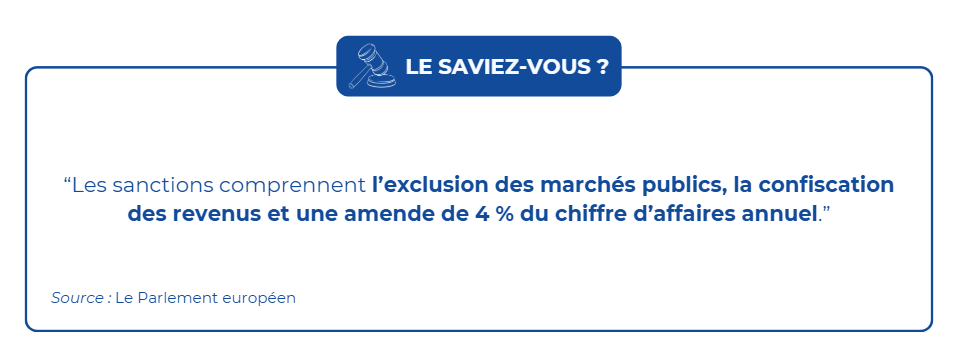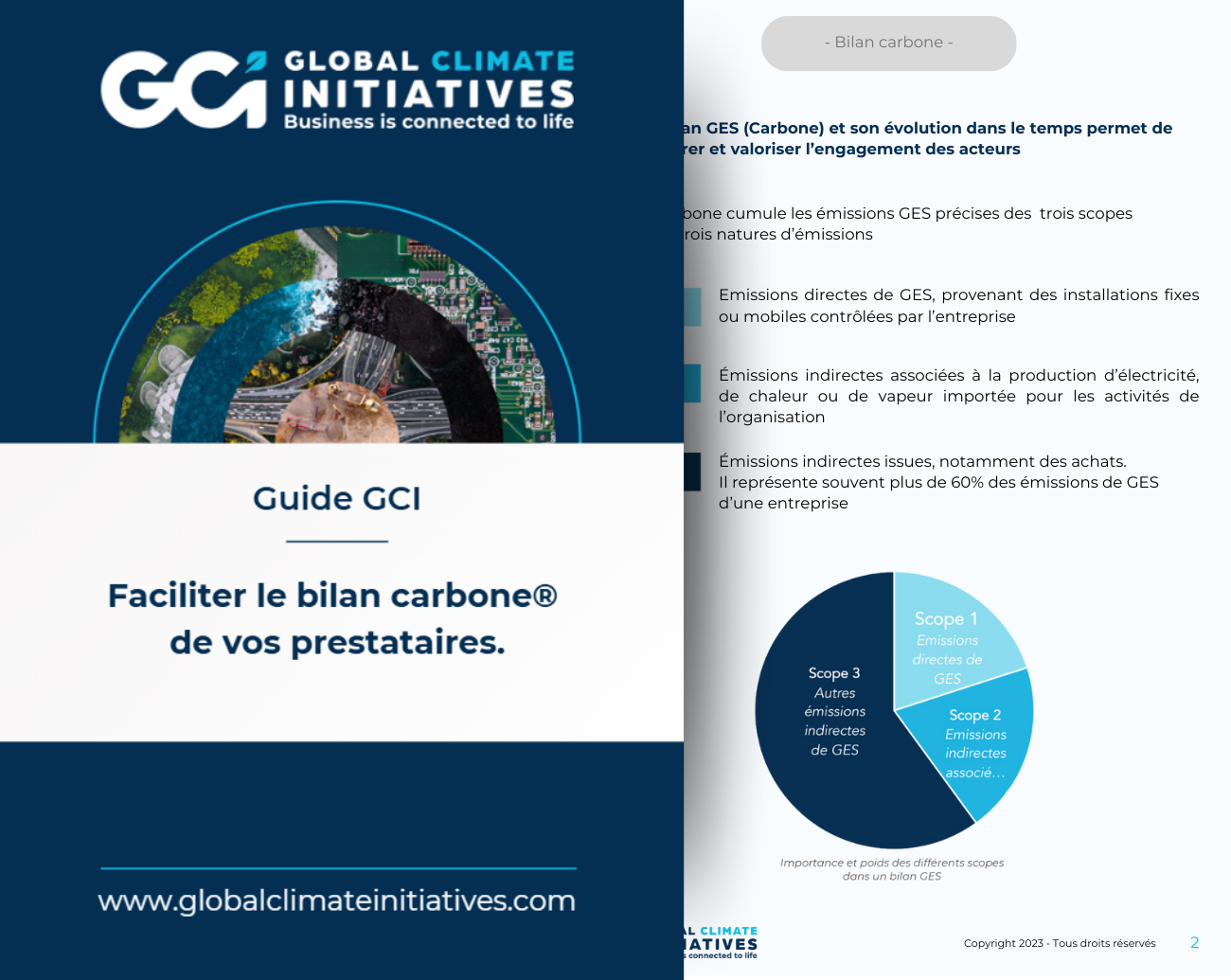Greenwashing: deciphering a controversial practice and how to protect against it

Did you know that 53% of companies' environmental claims are vague, misleading or unfounded, and that 40% have no evidence to back them up? These are the findings of a European Commission survey, which sheds light on an increasingly widespread practice: greenwashing.
At a time when consumers are looking for products that are more respectful of the environment, some brands are embellishing their environmental commitments with misleading marketing strategies. Although some of these brands are committed to the environment and sustainable development, they play on ambiguity and approximation to seduce a public concerned about its carbon footprint. Taking advantage of the ecological fad without necessarily adopting genuine sustainable strategies, these companies are moving away from responsible innovation based on transparency and real impact. As a result, greenwashing has become a veritable scourge: a deceptive strategy aimed at creating a greener image than it really is, to the detriment of transparency and credibility.
This greenwashing undermines the ecological transition by sowing confusion and distracting attention from genuine sustainable actions.
How can we recognize these practices? What impact do they have on organizations and individuals? And above all, how can we protect ourselves? This article deciphers the mechanisms of greenwashing and how to deal with them.
1.1 Definitions and common forms
1.2 Impact on purchasing behavior
2. How to recognize and avoid greenwashing
2.1. Criteria for identifying greenwashing
2.2. Best practices for companies
2.3 Examples of authentic initiatives
3. Fight greenwashing on a collective level
The mechanisms of greenwashing
💢Definitions and common forms
Greenwashing refers to the set of communication practices used by certain companies to present themselves as ecologically responsible without any real commitment. This strategy, which exploits consumers' growing sensitivity to environmental issues, is detrimental to the environmental transition by creating confusion and delaying the adoption of truly sustainable solutions to rising greenhouse gas emissions.
Greenwashing can take many forms:
- Misleading or deceptive advertising: using vague language ("natural", "green", "eco-friendly") without factual justification, or highlighting a single environmental aspect of the product to mask an overall negative impact.
- Uncertified green labels: labels created in-house or not based on any official certification, leading to a false perception of the environmental performance of a product or service.
- Ambiguous communication strategies: highlighting one-off or secondary ecological initiatives to distract attention from the real environmental issues linked to the company's core activities.
Several companies have been accused of greenwashing in recent years, illustrating the scale of the phenomenon:
- Volkswagen (2015) - Dieselgate: the automotive group has admitted to installing software to falsify the results of emissions tests on its diesel vehicles. This fraud, aimed at presenting engines as more environmentally friendly than they really were, led to a $30 billion fine and a massive loss of consumer confidence, according to BBC News.
- Coca Cola (J02024): In 2024, during the Paris Olympic Games, Coca-Cola, as official sponsor, was accused of greenwashing by several French environmental organizations, including France Nature Environnement (FNE). These criticisms focused on the company's promotion of its recycling initiatives, perceived as an attempt to mask its major role in global plastic pollution, according to an investigation by The Guardian.
👋Impact on purchasing behavior
Greenwashing directly affects consumer confidence and purchasing behavior.
According to a recent study by Green Finance :
- 64% of consumers have already stopped buying a product or brand after discovering a greenwashing strategy.
- 76% of under-35s say they are particularly attentive to false environmental claims.
- 80% of consumers want access to effective tools for detecting greenwashing.
This growing mistrust complicates the task of truly committed companies, who have to redouble their efforts to prove the sincerity of their CSR actions.
🚫The associated risks
Greenwashing exposes companies to major legal and economic risks:
- Regulatory and financial penalties: false environmental claims are sanctioned by consumer protection authorities and can result in substantial fines. For example, the European Union is planning to adopt a directive banning all environmental communication not backed up by verifiable scientific evidence.

- Reputational damage: a greenwashing scandal can lead to a loss of market share and lasting damage to a company's brand image. Consumers' and investors' distrust of non-transparent organizations translates into lower stock market valuations and difficulty in attracting new customers.

How to recognize and avoid greenwashing?
Having analyzed the mechanisms of greenwashing and its consequences, it is essential to learn how to detect it in order to better guard against it. Consumers and companies alike have a key role to play in preventing these deceptive practices, and in promoting genuine environmental commitments as part of a corporate social responsibility (CSR) approach.
Facilitate the GHG assessment of your providers
🔎 Criteria for identifying greenwashing
With the proliferation of environmental marketing strategies, it can be difficult to distinguish a sincere approach from an opportunistic one. Here are a few criteria for identifying greenwashing:
- Lack of tangible proof: A company promoting its ecological commitments without providing precise figures or explanations should be approached with caution.
- Use of vague, subjective language: The use of generic terms such as "eco-responsible", "environmentally friendly" or "sustainable", without official certification, is a potential indicator of greenwashing.
- Presence of non-certified labels: Some labels, created in-house or not based on any official recognition, can mislead consumers.
- Focus on a single environmental aspect: A company can highlight a specific attribute (e.g. recyclable packaging) while minimizing its overall environmental impact.
- Misleading communication strategies: An advertisement and/or campaign containing images of nature, green colors or environmental symbols with no correlation to the product's real impact can be misleading.
💡Good practices for companies
To avoid any accusations of greenwashing and adopt credible environmental communications, organizations need to observe several good approaches:
- Transparency and verifiable proof: It is essential to publish detailed and accessible reports, based on scientific data, to justify CSR commitments to the environment.
- Obtaining recognized certifications: Adopting official labels such as the European Ecolabel, Fair Trade or B Corp guarantees greater credibility.
- Systemic and coherent approach: Environmental commitment must involve all production and distribution processes, and not be limited to a single product or initiative.
- Communication RSE honnête et mesurée : Il convient d’éviter toute exagération des bénéfices attribués à l’environnement et de mentionner les axes d’amélioration afin de renforcer la crédibilité de l’entreprise.
✅Examples of genuine initiatives
- Patagonia: This outdoor clothing specialist is renowned for its commitment to the environment, particularly in terms of transparency regarding the origin of materials and manufacturing conditions.
- Veja: The sneaker brand favors the use of eco-responsible materials and an ethical production model, while communicating its impact clearly and transparently.
- Lush: Known for its handmade cosmetics, Lush promotes a policy of reduced packaging and natural compositions, while actively campaigning against animal testing.
These examples show that it is possible to reconcile economic profitability with a sincere commitment to the environment, provided that an authentic and responsible approach is adopted.
By understanding greenwashing criteria and applying best practices, individuals and companies can foster a more transparent and ethical business environment. The fight against this practice does not rely solely on individual vigilance, but also on a strengthened regulatory framework and collective mobilization, subjects which will be explored in greater depth in the following section.
Combating greenwashing on a collective level
⚖️Régulation and legal framework
Faced with the proliferation of misleading environmental claims, public institutions are gradually tightening regulations to provide a framework for corporate communications. Several initiatives have been launched at national and international level:
- The European directive against greenwashing: In 2023, the European Commission has proposed a regulation to ban unjustified green claims and strengthen transparency requirements for companies.
- France's Climate and Resilience Act: Passed in 2021, this law requires companies to justify their environmental promises and bans certain misleading statements, on pain of financial penalties.
- Tougher FTC sanctions in the USA: The Federal Trade Commission (FTC) has established strict guidelines for the use of eco-friendly terms in advertising, and sanctions companies for non-compliance.
These measures are essential to discourage greenwashing and encourage truly sustainable approaches.
💚The role of consumers
Consumers have considerable influence in the fight against greenwashing. By adopting a more critical and informed eco-responsible approach, they can encourage companies to improve their environmental practices.
Here are a few concrete actions that everyone can take:
- Check labels and certifications: Choose products with recognized certifications such as the European Ecolabel, Fair Trade, FSC (Forest Stewardship Council) or the B Corp label.
- Beware of vague rhetoric: Analyze brands' arguments and demand concrete proof of their environmental commitments.
- Get information from independent sources: Consult reports from NGOs, consumer associations or journalistic surveys to better assess companies' promises.
- Favoring truly committed companies: Supporting brands with a transparent approach aligned with sustainability values.
- Denounce greenwashing: Report deceptive methods to the relevant authorities or on social networks to raise awareness.
♾️Vers a sustainable future
The fight against greenwashing is not limited to regulation or individual vigilance; it relies on a profound transformation of commercial campaigns and mentalities. To achieve this, several levers can be activated:
- Enhanced environmental education: Raising awareness of sustainable development, energy management and the risks of greenwashing from an early age.
- Innovation and research: Encourage companies to invest in truly sustainable solutions, promote the development of eco-responsible technologies and favor more environmentally-friendly production, moving towards carbon neutrality.
- Collaboration between public and private players: governments, NGOs, businesses and citizens must join forces to establish solid, credible environmental standards, guaranteeing greater sustainability and contributing to a collective reduction in the world's ecological footprint.
This global approach is essential to promote an effective energy transition and a more environmentally-friendly economic model. Collaboration between public and private players: Governments, NGOs, businesses and citizens must join forces to ensure greater sustainability; contributing to a collective reduction in the global ecological footprint, in order to foster truly sustainable development.
Greenwashing represents a major obstacle to the ecological transition, confusing individuals and harming genuinely committed companies. In the face of this deceptive practice, individual vigilance is not enough: a strict regulatory framework, collective action and technological solutions are essential.
By accurately assessing their carbon footprints and greenhouse gas emissions, organizations can not only comply with ever-changing regulations, but also better understand their impact on climate and energy management. Greater transparency in the dissemination of information helps to combat false ecological claims. Acting now means meeting climate challenges while ensuring a resilient and responsible trajectory; an approach that involves individuals, households and organizations alike. What's more, effective awareness-raising campaigns are essential to mobilize all stakeholders and accelerate a genuine ecological transition.
Thanks to high-performance tools and expert support like those offered by GCI, they can transform these challenges into opportunities, aligning sustainability and competitiveness.
We aim to meet ministerial requirements and guidelines by promoting more responsible sports and raising awareness among our members and the general public.
Our carbon experts will be happy to give you a free free demonstration of our platform. 🚀
Sources
Green claims - European Commission
Volkswagen: The scandal explained - BBC News
The impact of greenwashing on consumer perception - Green Finance %
No to greenwashing and misleading product information | News | European Parliament
Greenwashing: validation of ecological claims by companies | News | European Parliament
Material Traceability - Patagonia UK
Ecology, transparency, CSR: Sébastien Kopp (Veja) calls on entrepreneurs to deconstruct to do better
Circular economy - We Are Lush - France







